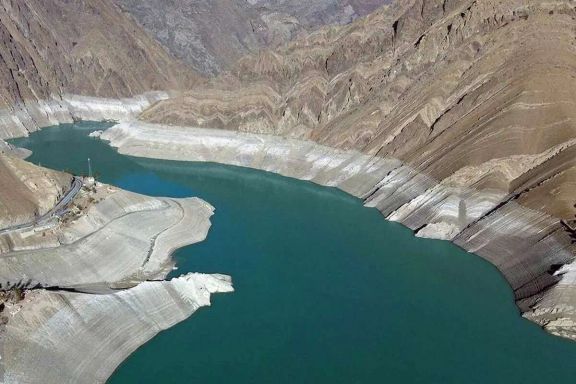Tehran’s Karaj reservoir at lowest in 64 years as water outages worsen

Karaj Dam, which supplies around 25% of Tehran’s drinking water, has dropped to its lowest level in 64 years, exacerbating widespread water outages across the Iranian capital.

Karaj Dam, which supplies around 25% of Tehran’s drinking water, has dropped to its lowest level in 64 years, exacerbating widespread water outages across the Iranian capital.
Residents in various districts describe inconsistent access, with high-rise buildings experiencing more severe cuts.
Authorities have advised installing pumps and storage tanks, but many complain water pressure is too low to make them effective. Power cuts also complicate the situation.
Field observations by Shargh newspaper show that Karaj Dam, normally holding up to 180 million cubic meters, now stores only around 60 million — one-third of its capacity. Of that, only a fraction is usable, as sediment and “dead water” account for an estimated 15% of the volume. Dam managers confirm a 45-meter drop in reservoir height from full capacity.
Mohammad Ali Moallem, the director of Karaj Dam, told Shargh that the reservoir has dropped to its lowest level in 64 years.
Authorities attribute the crisis to reduced rainfall, with Tehran province receiving just 185 mm this year — placing it among the top five water-stressed regions in the country.
Officials in Tehran blame drought and public overuse for Iran’s worst water shortage in living memory.
National figures show just 9.5% of Iran’s water goes to households and commerce, while agriculture consumes 86.5%, often with inefficient practices and low economic returns. Internal migration and aging infrastructure have further strained Tehran’s water system, making it the second most water-poor province after Sistan-Baluchistan.
In the capital Tehran, officials have attempted to curb consumption through emergency measures, including repeated water and electricity outages and temporary office closures on certain days.
An Iranian government plan to close workplaces and schools one day a week in response to worsening electricity and water shortages has sparked widespread criticism, with many citizens warning it will only deepen daily hardships.
The Islamic Revolutionary Guard Corps (IRGC) has built over 60 dams in recent decades. More than half are now empty, with hydropower generation operating at just one-third of its nominal capacity.
The United States on Tuesday criticized Iran’s leadership over the ongoing nationwide crisis.